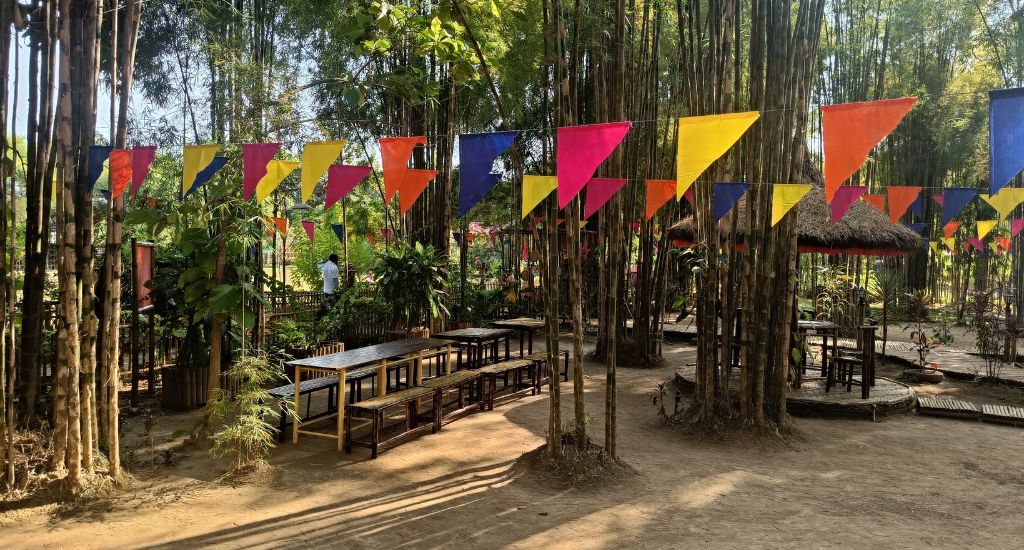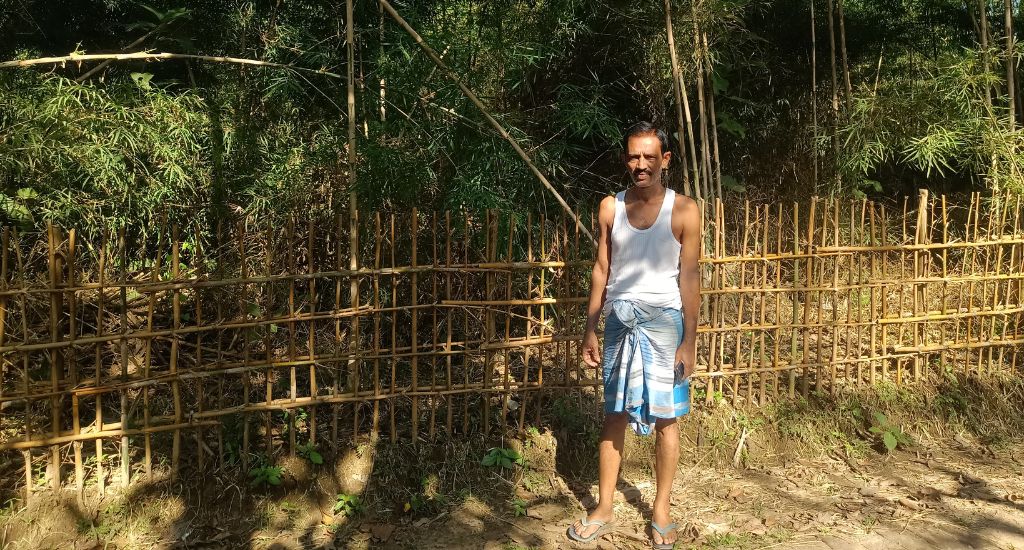
How bamboo farming is transforming lives in Tripura
In West Tripura district, a quiet revolution is taking root as farmers embrace bamboo cultivation under the state’s Bamboo Mission, redefining livelihoods and fostering sustainability.

In West Tripura district, a quiet revolution is taking root as farmers embrace bamboo cultivation under the state’s Bamboo Mission, redefining livelihoods and fostering sustainability.
Sivaji Ray, a humble farmer with less than a hectare of land to his name in Brahmakunda village of West Tripura district in Tripura, can claim big achievements. He embarked on a journey 18 years ago, moving from timber cultivation to bamboo farming, showing how adaptation in the face of change can transform life.
In 2006, he received a modest sum of Rs 6,000 and a handful of seeds of kanak kaich (Bambusa affinis) — a local bamboo variety — from the state’s agricultural department. Little did he envision then the profound impact this seemingly small gesture would have on his life and livelihood.
The grant, part of the Tripura Bamboo Mission initiated by the state government that year, aimed to promote bamboo cultivation — a practice deeply ingrained in the region’s cultural and architectural heritage. Bamboo is stronger than timber, is more accessible in remote parts, and can perform better in earthquakes and other natural disasters. Homes and buildings have been built out of bamboo for millennia.
At the time, Ray, employed as a panchayat secretary, viewed bamboo farming as an investment for the future. Eventually it became his primary source of income, sustaining him long after his retirement.
Also Read: One man’s bamboo quest breaks records

Today, Ray’s farm yields an impressive 10,000 to 15,000 bamboo shoots annually, translating into a profit of Rs 50,000 a year from biannual sales — in March and November. The transition from timber to bamboo cultivation has not only enhanced his economic prospects but also accelerated the pace of growth.
Prior to 2006, Rai cultivated teak (shegun) and white teak (gamai), patiently waiting for about 30 years after planting the saplings before reaping profits totalling around Rs 10-12 lakh. While timber trees required a decade or more to reach commercial viability, bamboo can be harvested within a mere two years — a testament to its unparalleled efficiency and versatility.
Ray’s farm now teems with mature bamboo clumps, each yielding multiple shoots ripe for harvest.
“It took a year… One bamboo clump has three to four new shoots, and I keep one for the farm, and sell the rest,” he said.
Traders flock to procure these prized stalks, each commanding a different price based on its size and utility. From fishing poles to furniture and javelins, bamboo finds myriad applications, catering to diverse needs and industries.
Also Read: Konkan farms reap the bounty of bamboo

The Tripura Bamboo Mission symbolises a concerted effort to revitalise the state’s bamboo sector, providing impoverished farmers like Sivaji Ray with enhanced livelihood opportunities. Its ambitious objectives, aimed at scaling up the bamboo industry and empowering local communities, have yielded promising results. The mission scaled up the state’s turnover from Rs 56.56 crore in 2009-10 to Rs 115.56 crore by 2012-13.
However, challenges persist, particularly concerning supply chain constraints and market linkages.
“…the producers cannot decide the price of their bamboo produce as they do not have much bargaining power in the value chain and are driven by the terms and conditions of the fluctuating market,” wrote Abhishek R Gawande, a project manager at the Maharashtra Bamboo Promotion Foundation, in an article.
Manna Roy, a pioneering figure in Tripura’s bamboo industry, acknowledges the mission’s initial success while lamenting its current shortcomings. For generations, Manna’s family has been synonymous with the bamboo trade, tracing their roots back to Bangladesh before settling in Katlamara village of Tripura. Their legacy is intertwined with Kanak kaich, also known as the Rangoon variety, which has flourished under their stewardship.
Also Read: Eco-activists root for bamboo

Roy’s crowning achievement lies in the transformation of nine acres in Katlamara into Bashgram — a sanctuary of sustainability and eco-tourism. Within its confines, 14 species of bamboo thrive, each lending its unique charm to a diverse array of eco-friendly creations — from water bottles to ornamental jewellery.
As a third-generation bamboo entrepreneur, Roy envisions a future where farmers receive equitable compensation for their produce, reflective of its true value. He laments the mission’s inability to fulfil its promise of empowering beneficiaries with market access and technical support to scale up farming endeavours.
“The rates for bamboo sticks should have been higher,” he asserted. The smallest size sells at Rs 6-7 per stick, the mid or lathi size sells at Rs 8-10, and the tallest sells at Rs 15-16.
When it comes to its advantages, bamboo-made products and their usage offer a preferable alternative to plastics due to their biodegradable nature and their role in promoting environmental sustainability. However, experts remain divided on its long-term viability, raising questions about the environmental impact of harvesting natural resources like bamboo. They also scrutinise the carbon footprint associated with the entire process, from bamboo harvesting to manufacturing and global transportation to the end consumer.
Also Read: Bamboo, a miracle material in Meghalaya

The economic viability of bamboo cultivation far surpasses endeavours with timber trees, offering a lucrative alternative with sustainable returns. Rajkamal Goswami, a senior conservation scientist affiliated with Bengaluru-based NGO Ashoka Trust for Research in Ecology and the Environment (ATREE), added a note of caution, underscoring the importance of ensuring that consumption doesn’t lead to bamboo depletion from forests.
“At the end of its life, bamboo items will be environmentally safer in the relative sense. However, a key aspect of sustainability is about the amount of consumption. If bamboo products become too popular and are too widely used, it can be counterproductive to its sustainability goals,” Goswami said.
The lead image at the top shows bamboo furniture on display at Bashgram in West Tripura district of the state. (Photo by Aatreyee Dhar)
Aatreyee Dhar is a Village Square Fellow 2023-24. She works as an independent journalist in Assam.